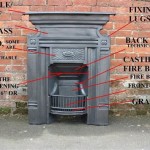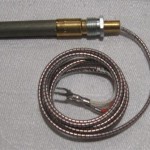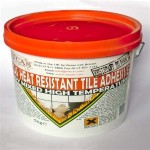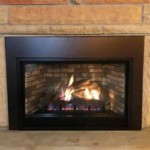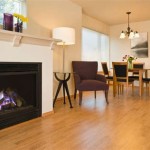Fireplace Cabinet Ideas: Enhancing Functionality and Style
A fireplace serves as a focal point in many homes, offering warmth and ambiance. Integrating cabinets around a fireplace can significantly enhance both its functionality and aesthetic appeal. Fireplace cabinets provide valuable storage space, conceal unsightly elements like media equipment and wiring, and contribute to a cohesive design scheme. This article explores a range of fireplace cabinet ideas, focusing on design considerations, material options, and practical implementation strategies.
Maximizing Storage and Organization
One of the primary benefits of incorporating cabinets around a fireplace is the increased storage capacity. This storage can be utilized for a variety of purposes, from holding firewood and seasonal decorations to organizing media components and books. The design of the storage solutions will dictate their utility and how well they integrate with the overall aesthetic of the room.
Consider the specific storage needs of the space when planning the cabinet configuration. For instance, if the intention is to store firewood, cabinets with open shelving or cubbies near the firebox might be necessary. These open storage solutions allow for easy access to the wood and contribute to the rustic charm of the fireplace. Conversely, if the primary goal is to conceal media equipment, closed cabinets with ventilation and cable management systems are essential.
The height and depth of the cabinets should also be carefully considered. Taller cabinets can offer more vertical storage, while deeper cabinets can accommodate larger items. A combination of cabinet sizes and configurations can provide a flexible storage solution that caters to diverse needs. Drawers can be incorporated for storing smaller items, while adjustable shelves can accommodate items of varying sizes.
Within the cabinets, organization systems can further enhance their functionality. Shelf dividers, drawer organizers, and pull-out trays can help to keep items neatly arranged and easily accessible. Labeling shelves and drawers can also improve organization and prevent clutter.
Integrating Media and Technology
In modern living spaces, the fireplace often shares its space with media equipment such as televisions, sound systems, and gaming consoles. Integrating these components seamlessly into the fireplace cabinet design can create a clean and organized entertainment area. Careful planning is crucial to ensure that the media equipment is properly housed and ventilated.
When integrating a television above the fireplace, it's important to consider the viewing height and angle. Mounting the television too high can lead to neck strain and discomfort. The optimal viewing height will depend on the size of the television and the distance from the seating area. Articulating television mounts can provide flexibility in adjusting the viewing angle.
Cabinets designed to house media equipment should include ample ventilation to prevent overheating. This can be achieved through the use of perforated cabinet doors, ventilation grilles, or built-in fans. Cable management systems are also essential for keeping wires organized and hidden from view. This can involve the use of cable routing channels, grommets, and zip ties.
Remote control extenders can be used to operate media equipment housed inside closed cabinets. These devices allow the remote control signal to pass through the cabinet doors, eliminating the need to open the doors to operate the equipment. Integrating smart home technology, such as smart lighting and voice control, can further enhance the functionality and convenience of the media area.
Consider integrating a soundbar into the cabinet design. A recessed area can be built in above or below the television, allowing the soundbar to sit flush with the cabinet face. This creates a clean and integrated look, while also maximizing sound quality.
Aesthetic Design and Material Selection
The aesthetic design of the fireplace cabinets should complement the architectural style of the room and the existing décor. The choice of materials, colors, and finishes will significantly impact the overall look and feel of the fireplace area. A wide variety of material options are available, each with its own unique characteristics and aesthetic appeal.
Wood is a classic and versatile material choice for fireplace cabinets. Different types of wood, such as oak, maple, cherry, and walnut, offer varying grain patterns and colors. Wood cabinets can be stained, painted, or left natural to showcase the beauty of the wood grain. The choice of wood will depend on the desired aesthetic and the overall color palette of the room.
Paint colors can be used to coordinate the cabinets with the surrounding walls and furniture. Neutral colors, such as white, gray, and beige, are popular choices for their versatility and timeless appeal. Bold colors can be used to create a dramatic focal point. The finish of the paint, such as matte, satin, or gloss, can also impact the overall look of the cabinets.
Hardware, such as knobs, pulls, and hinges, can add a decorative touch to the cabinets. A wide variety of hardware styles are available, ranging from traditional to contemporary. The choice of hardware should complement the overall design aesthetic of the cabinets and the room.
Stone and brick can be incorporated into the fireplace cabinet design to create a rustic or natural look. Stone veneers, such as stacked stone or ledgestone, can be applied to the cabinet fronts to add texture and visual interest. Brick can be used to create a traditional fireplace surround.
Consider incorporating lighting into the cabinets. Under-cabinet lighting can provide task lighting for reading or other activities, while interior cabinet lighting can illuminate the contents of the cabinets. Backlighting can be used to create a dramatic effect.
Glass doors can be used to display decorative items or books. Clear glass doors allow for unobstructed viewing, while frosted or textured glass doors can provide privacy and conceal clutter. Glass shelves can also be used to create a lightweight and airy feel.
The scale of the cabinets should be proportionate to the size of the fireplace and the room. Overly large cabinets can overwhelm the space, while undersized cabinets may not provide adequate storage. Consider the dimensions of the fireplace and the surrounding walls when planning the cabinet design.
Custom cabinetry offers the most flexibility in terms of design and functionality. Custom cabinets can be tailored to fit specific needs and preferences, ensuring a perfect fit and seamless integration with the existing décor. However, custom cabinets are typically more expensive than prefabricated cabinets.
Prefabricated cabinets are a more budget-friendly option. These cabinets are available in a variety of styles and sizes, making it easier to find a design that suits your needs. Prefabricated cabinets may require some modifications to fit around the fireplace.
Floating shelves can be added to the sides of the fireplace. This can provide an area to display candles or photos.

ᑕ❶ᑐ Electric Fireplace Cabinets Types Features Comparison

Last Week S Links House Of Jade Interiors Home Fireplace Interior Living Room

Fireplace Cabinets Built In Wall Units Bookcases Around Fireplaces

Fireplace Built In Cabinets Design Ideas

10 Fireplace Decor Ideas That Will Warm Your Space

Custom Built In Entertainment Furniture And Cabinets With Electric Fireplaces

Cabinets Either Side Of Fireplace Design Ideas

Stone Fireplace Ideas For Your Home Beautiful Homes

13 Stunning Fireplace Accent Wall Ideas For Your Home Carla Bast Design

Cabinets Flank Fireplace Design Ideas
Related Posts




